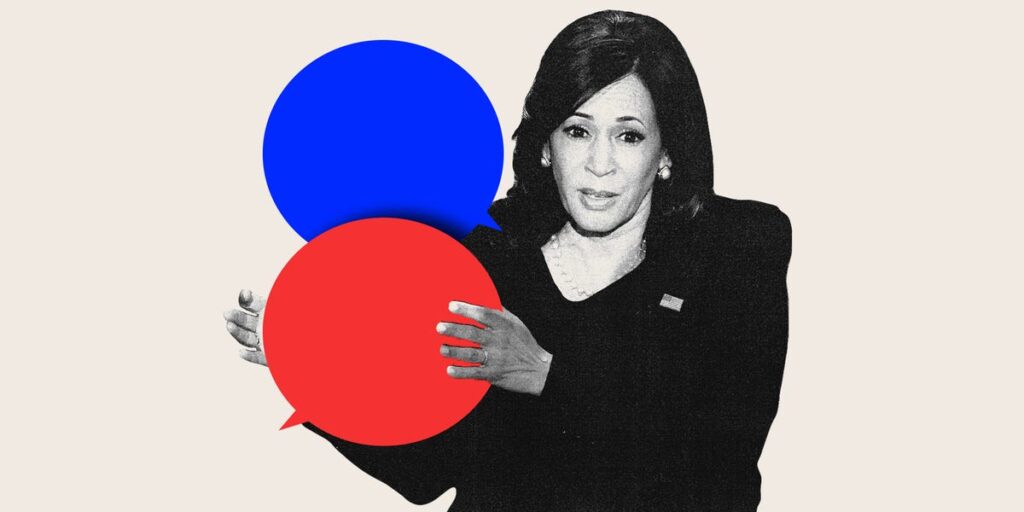This as-told-to essay is based on a conversation with Selena Rezvani, a 46-year-old confidence expert and speaker based in Philadelphia. It’s been edited for length and clarity.
Whether at a high-stakes boardroom meeting or bustling networking event, it can be tricky to reclaim attention after being spoken over or interrupted. Your inclination may be to shy away from confrontation and internalize the message that your thought was unimportant.
As a leadership speaker and expert on workplace confidence, I’ve spent decades analyzing the best techniques for garnering attention and communicating effectively. Vice President Kamala Harris is one of my strongest examples of someone who commands a room with equal parts power and composure.
Harris first grabbed my attention with her masterful handling of interruptions from Mike Pence during the 2020 Vice Presidential debate. Since then, she’s continued to be a powerful force on the campaign trail, using her skills to mitigate disruptions and maintain authority.
These are four lessons for how to manage being talked over that we can learn from Harris.
Pointed eye contact can force the interrupter to acknowledge you
When interrupted by Mike Pence during the 2020 Vice Presidential debate, Harris turned her attention to Pence and made pointed eye contact with him. She didn’t shrink away from the interaction or internalize his disruption; rather her eye contact demonstrated authority, confidence, and control over the situation.
Making eye contact with someone who’s been dismissive of you demands their attention and forces them to acknowledge you. Eye contact can also create a moment of discomfort for the other person, which may incentivize them to stop talking or at least reconsider their behavior.
A body language warning can stop someone from continuing to talk over you
Many people respond to interruption by physically shrinking or questioning themselves. However, Harris stands strong when she’s disrupted by using a clear, non-verbal signal that shows she’s not done talking. Her go-to, a stop sign hand signal, is an expansive gesture that proves she will continue to claim her full bubble of space in terms of her body language and verbal communication.
I often advise people to continue talking when they’re being interrupted, but sometimes a calm, yet assertive gesture like a stop sign or index finger can deescalate an emotional situation and recenter the conversation.
You don’t need permission to continue speaking
Harris often responds to disruption by cooly, yet firmly stating “I’m speaking.” This short statement conveys that she intends to finish her thought before allowing someone else to take over.
Rather than yielding to the other person by asking “Can I please finish,” she stays calm and maintains the focus of her message. It’s important to remember that you don’t need to ask for permission to continue speaking when someone interrupts you.
The broken record technique is great for reasserting boundaries
A technique that works particularly well with pushy communicators and domineering types is the “broken record technique” which means repeating your phrase, like Harris’ “I’m speaking,” until you regain control. Harris uses this strategic repetition to highlight just how many times she’s been interrupted or disrespected. This technique also reasserts her boundaries and shows she will not back down. Try using this technique with a pushy coworker who isn’t hearing or respecting your boundaries the first time around.
The bottom line
No matter who you are, you’re sure to come in contact with people who think they’re entitled to more space, attention, words, or time than you. The key we can learn from Harris is to not internalize that message and let it diminish your presence.
Stay grounded in the core message you intend to share and don’t be afraid to reclaim space. And remember: these tips don’t need to be tested out in some high-stakes boardroom meeting. Try testing the waters in low-stakes work or social environments and build your confidence.
If you’re an expert with helpful tips that can be used in the workplace and want to share your advice, email Tess Martinelli at tmartinelli@businessinsider.com.
Read the full article here


